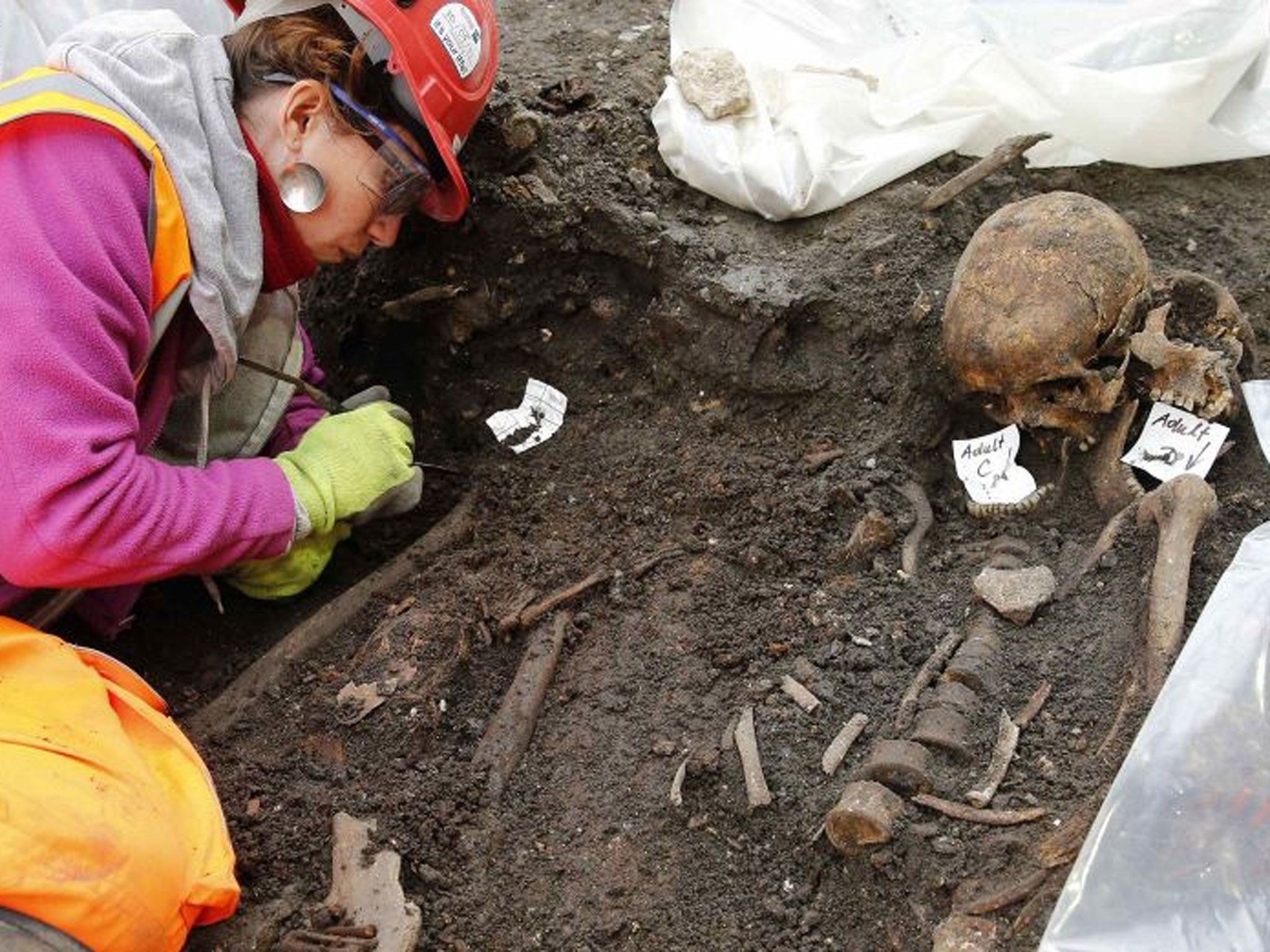Bedlam burial ground: Archaeologists excavating 3,000 skeletons from under London's Liverpool Street station
The site was used during the Great Plague, which wiped out tens of thousands of people in London

Your support helps us to tell the story
From reproductive rights to climate change to Big Tech, The Independent is on the ground when the story is developing. Whether it's investigating the financials of Elon Musk's pro-Trump PAC or producing our latest documentary, 'The A Word', which shines a light on the American women fighting for reproductive rights, we know how important it is to parse out the facts from the messaging.
At such a critical moment in US history, we need reporters on the ground. Your donation allows us to keep sending journalists to speak to both sides of the story.
The Independent is trusted by Americans across the entire political spectrum. And unlike many other quality news outlets, we choose not to lock Americans out of our reporting and analysis with paywalls. We believe quality journalism should be available to everyone, paid for by those who can afford it.
Your support makes all the difference.Archaeologists have begun the laborious process of excavating around 3,000 skeletons from a London burial ground used during the Great Plague in 1665, to make way for a new Crossrail ticket hall at Liverpool Street station.
The Bedlam burial ground is believed to have been used for almost over 170 years, from 1569 to 1738.
Experts hope tests on remains from the site, also known as Bethlehem and the New Churchyard, will offer a deeper insight into the evolution of the bacteria which caused the plague which killed between 75,000 and 100,000 of London’s rapidly expanding population of about 460,000.
Images show the skeletons embedded into the ground like tree roots. A team of 60 archaeologists must now work for six days over the next four weeks to remove and carefully record evidence from the site.
The archaeologists will then begin digging through medieval marsh deposits and Roman remains, as a Roman road runs under the site, which has already yielded several interesting Roman artefacts such as horseshoes and cremation urns.
The site may prove to be London’s most archaeologically valuable 16th and 17th century cemetery site, and could hold the musket-shot-riddled remains of one of Britain’s great left-wing heroes Robert Lockyer.
Crossrail lead archaeologist Jay Carver said: “This excavation presents a unique opportunity to understand the lives and deaths of 16th and 17th century Londoners.
“The Bedlam burial ground spans a fascinating phase of London's history, including the transition from the Tudor-period city into cosmopolitan early-modern London.”
He went on: “This is probably the first time a sample of this size from this time period has been available for archaeologists to study in London.
“Bedlam was used by a hugely diverse population from right across the social spectrum and from different areas of the city.”
To date Crossrail has found more than 10,000 artefacts spanning many years of London's past across more than 40 construction sites. It is the UK's largest archaeology project.
Preliminary excavations at the Liverpool Street site in 2013 and 2014 have already uncovered more than 400 skeletons and numerous artefacts.
Additional reporting by PA
Join our commenting forum
Join thought-provoking conversations, follow other Independent readers and see their replies
Comments